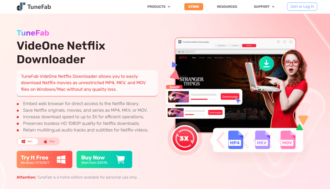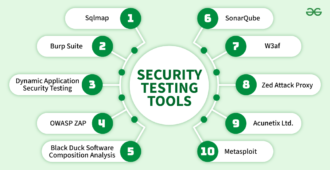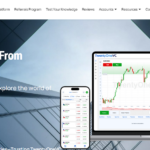What Are The Common Challenges for Implementing Board Portal Software?
Board portal software revolutionises how organizations manage board meetings, communication, and documentation. It offers a centralized, secure platform that enhances efficiency, transparency, and collaboration among board members and administrative staff. However, implementing board portal software challenges like any significant technological shift. Understanding these potential obstacles and how to address them is crucial for a smooth transition and maximising the software’s benefits.
Understanding Board Portal Software
Before diving into the challenges, it’s essential to understand what board portal software entails. Board portal software is a digital platform that streamlines board meetings and communication. It offers features such as document storage, meeting scheduling, voting tools, and communication channels, all within a secure environment. The primary goal of this software is to enhance the efficiency and effectiveness of board operations, ensuring that members have easy access to the information they need while maintaining the highest levels of security.
Common Challenges and How to Overcome Them

1. Resistance to Change
Challenge: One of the most significant challenges organizations face when implementing new technology is resistance to change. Board members and staff may be accustomed to traditional methods of communication and documentation, such as email, paper documents, and shared drives. Introducing new software can be seen as an unnecessary complication, leading to reluctance or outright refusal to adopt the new system.
Solution: To overcome this resistance, it’s crucial to communicate the benefits of the board portal software. Highlight how the software will improve efficiency, security, and cost savings. Providing real-life examples or case studies of successful implementations similar to your organization can help ease concerns. Encourage open discussions where board members and staff can voice their worries and ask questions. Emphasize the long-term advantages for the organization, such as reduced administrative workload, enhanced decision-making processes, and improved governance. Additionally, involving key stakeholders in decision-making can create a sense of ownership and increase buy-in.
2. Technical Difficulties
Challenge: Another common challenge is users’ technical difficulties when adopting new software. Board members and staff may lack the necessary skills to navigate the software effectively, leading to frustration and decreased productivity. Furthermore, the fear of technology, particularly among less tech-savvy members, can hinder adoption.
Solution: Choosing user-friendly software with an intuitive interface is a critical first step. Software vendors often offer comprehensive training sessions, including hands-on workshops, video tutorials, and user manuals. These resources can help users familiarize themselves with the software’s features and functionality. Additionally, ensure ongoing support through a dedicated helpdesk or customer service team to assist with any technical issues. Encouraging a continuous learning and improvement culture can help users gain confidence in using the software, making the transition smoother.
3. Data Migration
Challenge: Migrating existing documents and data to the new board portal system can be complex and time-consuming. The risk of errors, data loss, or corruption during migration can lead to significant disruptions and loss of trust in the new system.
Solution: Planning the migration process carefully is essential to minimize disruptions. Start with a pilot phase to test the migration on a smaller scale, allowing you to identify and address any issues before a full-scale migration. Many board portal software vendors offer data migration tools that automate and streamline the process, reducing the risk of errors. Conducting thorough checks before and after migration is crucial to ensure data integrity. Selecting a vendor that provides support during the migration process can reduce the likelihood of issues and ensure a successful transition.
4. Integration with Existing Systems
Challenge: Integrating board portal software with existing systems, such as email, calendar, and file storage platforms, can be a challenging task. Compatibility issues and workflow disruptions can occur if the integration is mishandled.
Solution: To address this challenge, choose board portal software that seamlessly integrates with commonly used tools and platforms. Working closely with the software vendor to configure the integration properly is essential. This may involve customizing the software to meet the organization’s needs or resolving compatibility issues. It’s necessary to perform thorough testing before full implementation to identify and address potential problems. By ensuring that the board portal software works harmoniously with existing systems, organizations can minimize disruptions and enhance the overall user experience.
5. Cost Concerns
Challenge: The initial cost of purchasing and implementing board portal software can be a concern, especially for organizations with limited budgets. The financial investment required for software licenses, training, and support may be seen as a barrier to adoption.
Solution: When addressing cost concerns, it’s essential to consider the long-term cost savings and return on investment (ROI) that the software can offer. Board portal software can reduce the need for physical document printing, mailing, and administrative tasks, leading to significant cost savings over time. Additionally, many software vendors offer flexible pricing plans or subscription models that can be tailored to fit different budget constraints. Leveraging free trials or demos can also help organizations evaluate the software’s value before committing financially. Furthermore, reviewing the vendor’s reputation and requesting references can provide confidence in making sound decisions.
6. Ensuring Security and Compliance
Challenge: Ensuring the new software complies with industry regulations and provides adequate security for sensitive information is critical. The fear of data breaches, unauthorized access, and non-compliance with regulations can be daunting for organizations.
Solution: To mitigate security and compliance risks, choose a board portal software with robust security features. Look for features such as encryption, multi-factor authentication, and role-based access control, which can help protect sensitive information. Verifying that the software complies with relevant regulations and standards, such as ISO 27001, GDPR, and HIPAA, is also essential. Regular software updates and security audits conducted by the vendor can further ensure compliance and maintain the highest levels of security. Organizations can safeguard their data by prioritizing security and compliance and maintaining trust among board members and stakeholders.
7. User Adoption
Challenge: Even with comprehensive training, some users may be slow to adopt the new software or revert to old habits, undermining the effectiveness of the board portal software.
Solution: Fostering a continuous learning and improvement culture is crucial in ensuring user adoption. Assigning champions or super-users within the organization who advocate for the software and assist their peers can encourage broader adoption. Providing incentives or recognition for software users can motivate others to follow suit. Regularly gathering user feedback and making necessary adjustments to enhance the user experience can further support adoption. Organizations can increase the likelihood of successful implementation by creating an environment where users feel supported and valued.
Conclusion
Implementing board portal software can be a transformative step for organizations, offering numerous benefits regarding efficiency, security, and collaboration. However, the process is not without its challenges. By understanding these common obstacles and proactively addressing them, organizations can ensure a smooth transition and fully leverage the advantages of the software. From overcoming resistance to change to providing security and compliance, careful planning and ongoing support are essential to successful implementation. With the right approach, board portal software can become indispensable for enhancing governance and driving organizational success.

















